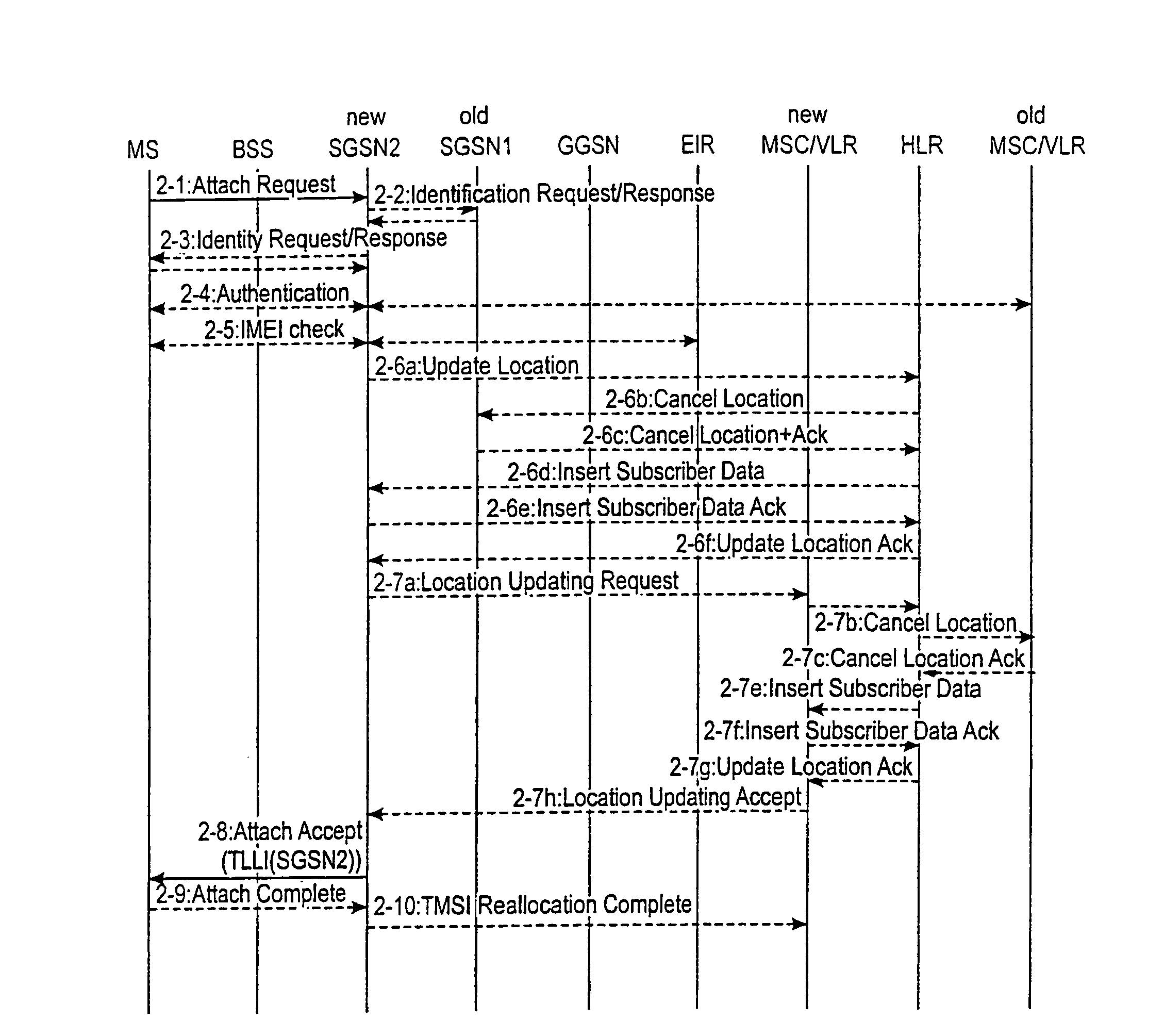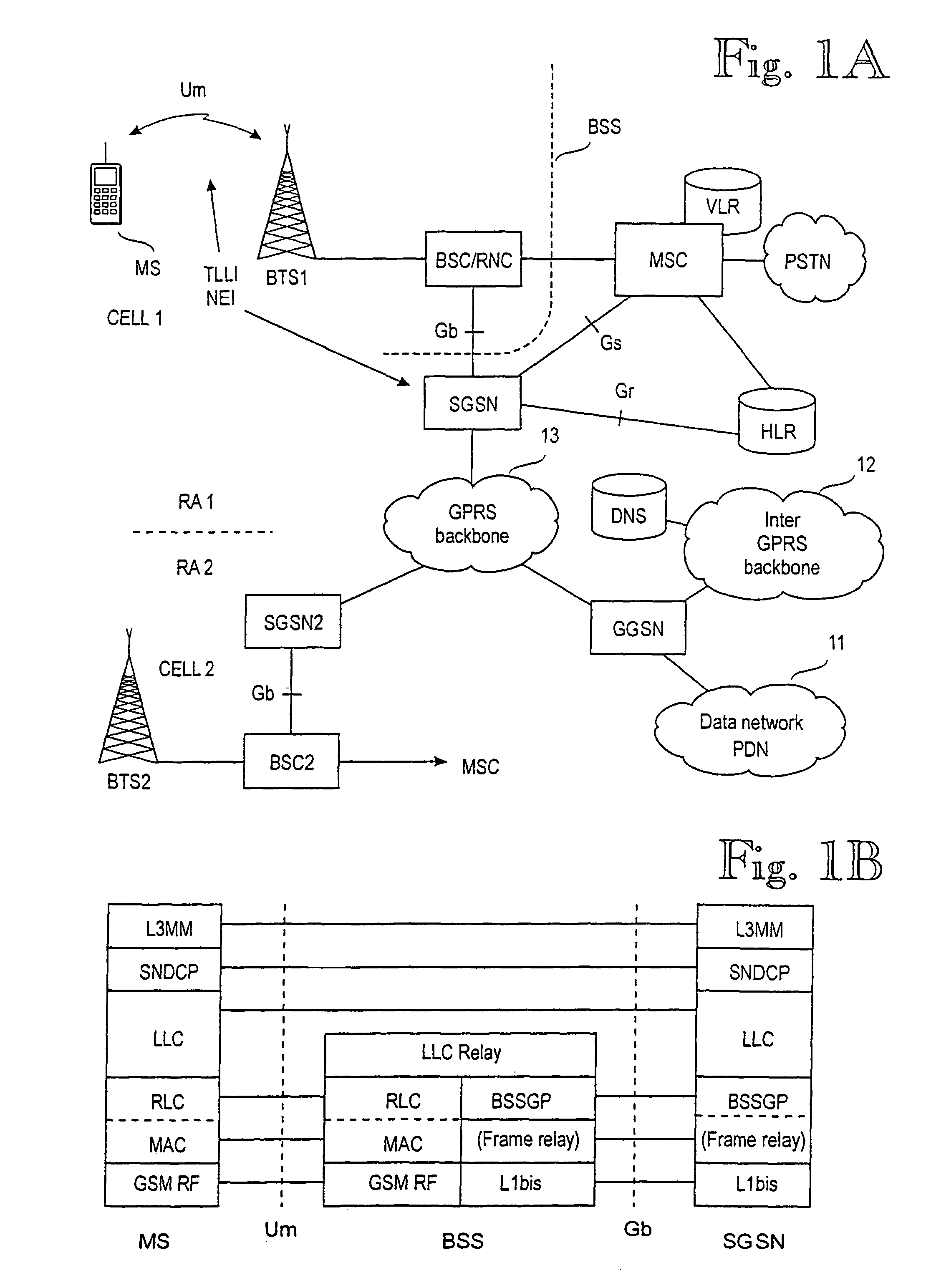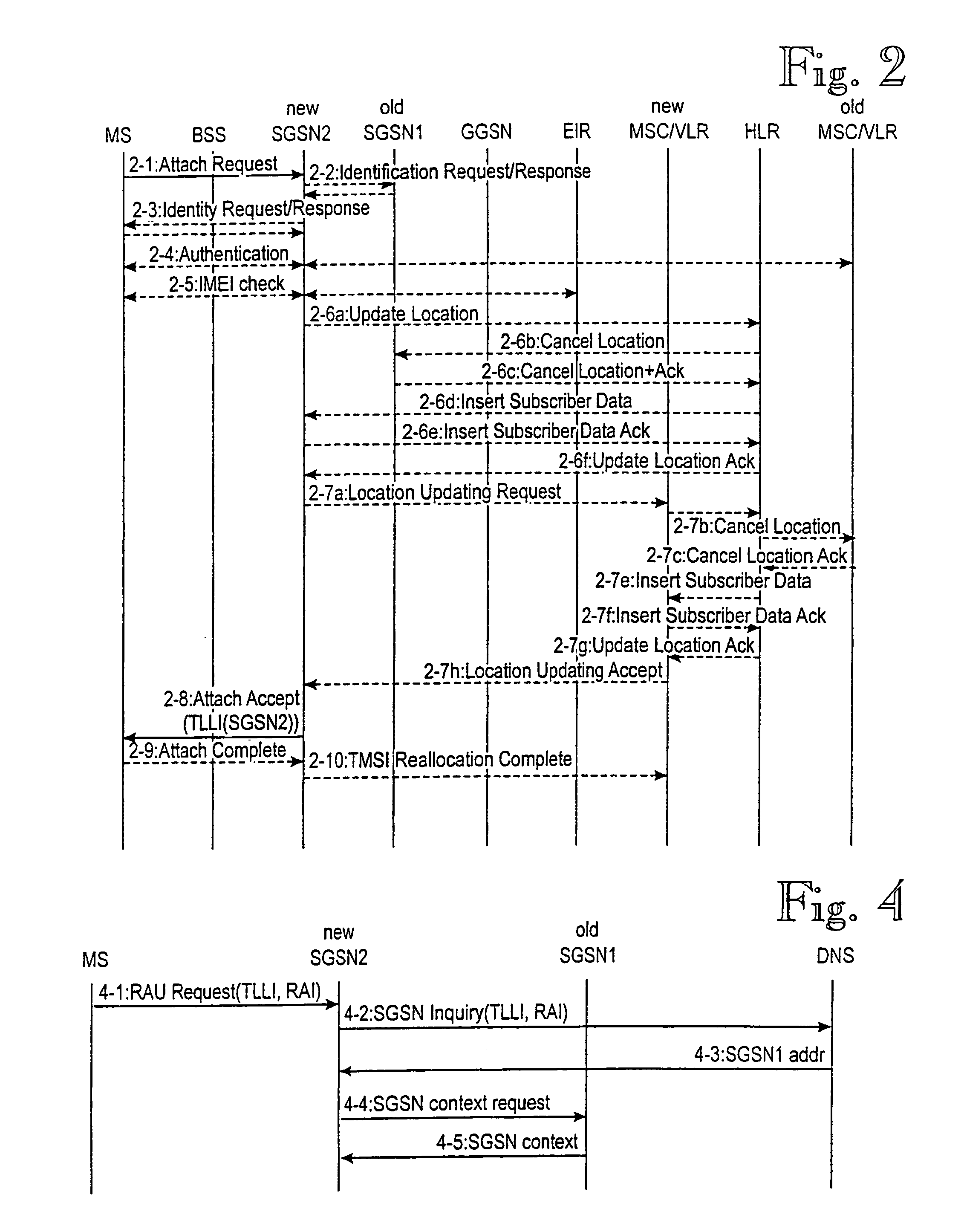Identifying a mobile station in a packet radio network
a packet radio and mobile station technology, applied in the field of packet radio networks, can solve the problems the assumption may no longer be valid, and the risk of two supporting network elements allocating the same tlli to two different mobile stations
- Summary
- Abstract
- Description
- Claims
- Application Information
AI Technical Summary
Benefits of technology
Problems solved by technology
Method used
Image
Examples
Embodiment Construction
[0056]The present invention can be applied to packet radio systems of various kinds. The invention can be used especially preferably for providing a general packet radio service GPRS in the pan-European digital mobile communication system GSM (Global System for Mobile Communication) or in corresponding mobile communication systems, such as the DCS1800 and the PCS (Personal Communication System), or in a more advanced system, such as the UMTS (Universal Mobile Telecommunications System). In the following, the preferred embodiments of the invention will be described by means of a GPRS packet radio network formed by the GPRS service and the GSM system without limiting the invention to this particular packet radio system. For example, in third-generation systems, such as the UMTS, a radio network controller RNC may be used instead of a BSC, etc.
[0057]When the MS detects a new cell or a new routing area RA, this means one of four possible cases: 1) a cell update is needed; 2) a routing a...
PUM
 Login to View More
Login to View More Abstract
Description
Claims
Application Information
 Login to View More
Login to View More - R&D
- Intellectual Property
- Life Sciences
- Materials
- Tech Scout
- Unparalleled Data Quality
- Higher Quality Content
- 60% Fewer Hallucinations
Browse by: Latest US Patents, China's latest patents, Technical Efficacy Thesaurus, Application Domain, Technology Topic, Popular Technical Reports.
© 2025 PatSnap. All rights reserved.Legal|Privacy policy|Modern Slavery Act Transparency Statement|Sitemap|About US| Contact US: help@patsnap.com



